Photographer Fabeha Monir (@fabeha.anahita) from Bangladesh, worked on a cross-border collab a few years back (in 2018) with three journalists who won a research grant of the European Centre for Journalism. This grant has the goal to “improve awareness and understanding among diverse audiences in Germany on global health topics across developing projects”. And that’s exactly what they did with this project. The team chose to bring to light the high rate of women dying in childbirth in Bangladesh and did this through the eyes of midwives who battle daily to save as many lives as possible. They spent almost two weeks together in the Rohingya Camp and later in Dhaka.
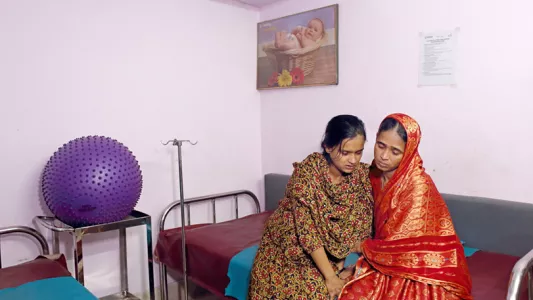
Bangladesh committed to doing something about the high rates of maternal mortality, in accordance with the United Nations’ Millennial Development Goals. These goals were the predecessors of the current Sustainable Development Goals (SDGs), which are more extensive and ambitious. In short, these 17 concrete SDGs are a blueprint to achieve a better and more sustainable future, to be achieved by 2030. All 17 are global challenges, related to the 5 P’s; People, Planet, Prosperity, Peace and Partnership, to be divided into three categories: social, economic and environmental. In this case for Bangladesh it’s goal number 3 of 17 that applies: Good Health and Well-being.
The number of women dying in childbirth -or shortly after due to complications- has certainly declined in the last decades but is still unimaginably high. To cite some numbers for perspective: in 2000 about 434/100 000 women died in Bangladesh, in 2017 that dropped to 173/100 000. In the west the number ranges between 2 – 10 deaths /100 000 people. The most influencing factors in these high death rates are linked to the personal situations of the women; their age and education level as well as their households’ wealth and location of residence (rural or urban). Why? Because the higher they are educated and the more resources they have access to, the more likely they are to have a skilled attendant with them at the time of birth, which drastically improves their chances.
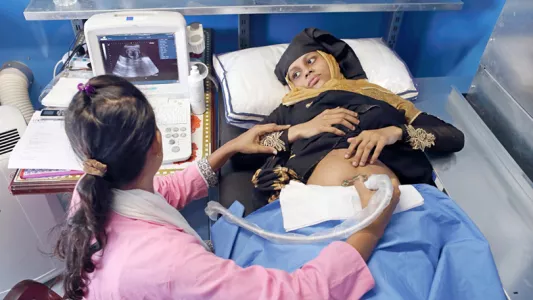
Such a skilled attendant can be a doctor, but a properly trained midwife qualifies as well. The latter profession still deals with a lot of stigmas however, due to a lot of prejudice both from doctors and families, and as a result their numbers are far too low. Many trained midwives are only used for tasks below their level of experience, or not trusted by the families, so that they cannot put to use what they have trained for, or no one is available to lead the newly trained midwives. In addition to the stigmas, the pay is low so that the women are doing it more out of conviction for the cause than for their personal benefit. All together it would take about 20.000 midwifes to look after all mothers in Bangladesh, but so far there’s only about a tenth of that available, according to Rondi Anderson, the midwife specialist at the UN Population Fund in Dhaka. Statistically, it is not yet possible to see the difference the midwives make, and while that should be possible in a few years, it goes without saying that less women bleed to death with a professional present.
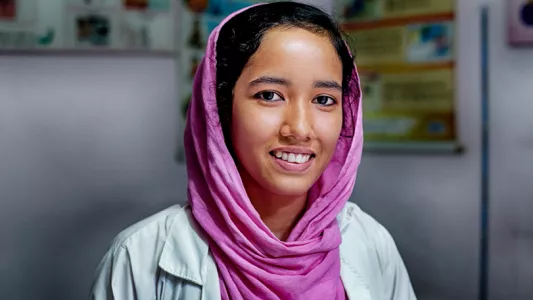
One of these professionals is Afroja Akter, who is a midwife in Dhaka. Monir followed her during her rounds for this project. At the time Afroja was 23 years old and had been working as a midwife for only 8 months. She delivered about a hundred babies in that timespan and hadn’t lost a single mother. However, the services midwives provide go way beyond the mere delivery of the babies. Prevention and aftercare are at least as important, and so Afroja too, educated the mothers about newborn jaundice as well as helped them with breastfeeding. While on rounds, Afroja wears a pink dress and headscarf as well as a lab coat so that she’s easily recognizable in the streets. She works 6 days a week, rides 3 hours through traffic everyday to do her job and barely makes a third more than a textile factory worker, which is roughly equivalent to 270 euros a month. But she doesn’t mind, she is proud of her occupation and her results, she is saving women’s lives after all.
This isn’t the only story of its kind to pass through Monir’s lens. She looks for underreported stories, the ones that are meaningful, that have a universal angle. As such, she spends a lot of time on the pre-visualization period; reading, collecting photography articles and interviews, etc. All with the goal to create meaningful work rather than just something pretty to sell. It is a tough balance, to prepare in such a profound way and then having to work in the restricted timeframes common in journalism. But she always manages to interact with her subjects and that is visible in her work. Of course, this speaks to her convictions on photography as a medium and the responsibility a photographer carries in her eyes.
The photographer provides the first line of ‘ethical defense’. [...] I often ask myself how my stories can drive change. Visual journalists play an important role providing vital information to communities affected by crisis. We have to continue to question how we tell these stories, make an impact, and minimize risks, both for ourselves and our subjects.
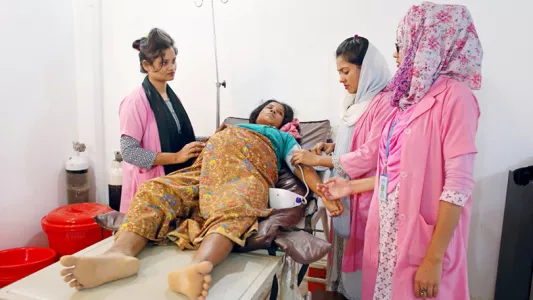
She wants to create impact, to influence not only private individuals but decision makers and whole communities. Not through horror imagery intended to shock or hurt, rather through well thought out stories that speak to people on a basic level of compassion. She reminds her viewers of the simple but real treasures of living, even amidst the chaos of life as we know it right now, and questions the morals and values of our materialistic society of today. This series on the midwives shows the dedication and selflessness of these women, and while they move mountains, more needs to be done still for a fundamental impact. She hopes that showing the injustices provokes a mental shift and subsequent action from people who do have the power to incite change.
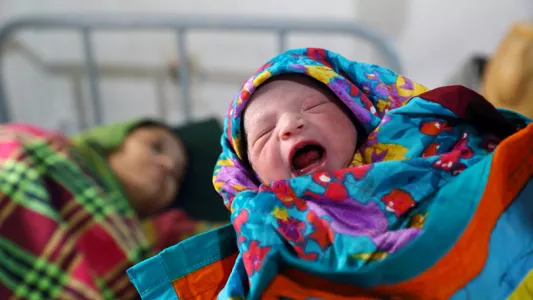
Very much like the midwives, Monir does what she does because she believes strongly that visual journalists can have an enormous impact if their work is used in the right way. The midwives clearly aren’t the only pioneers of emancipation here.




